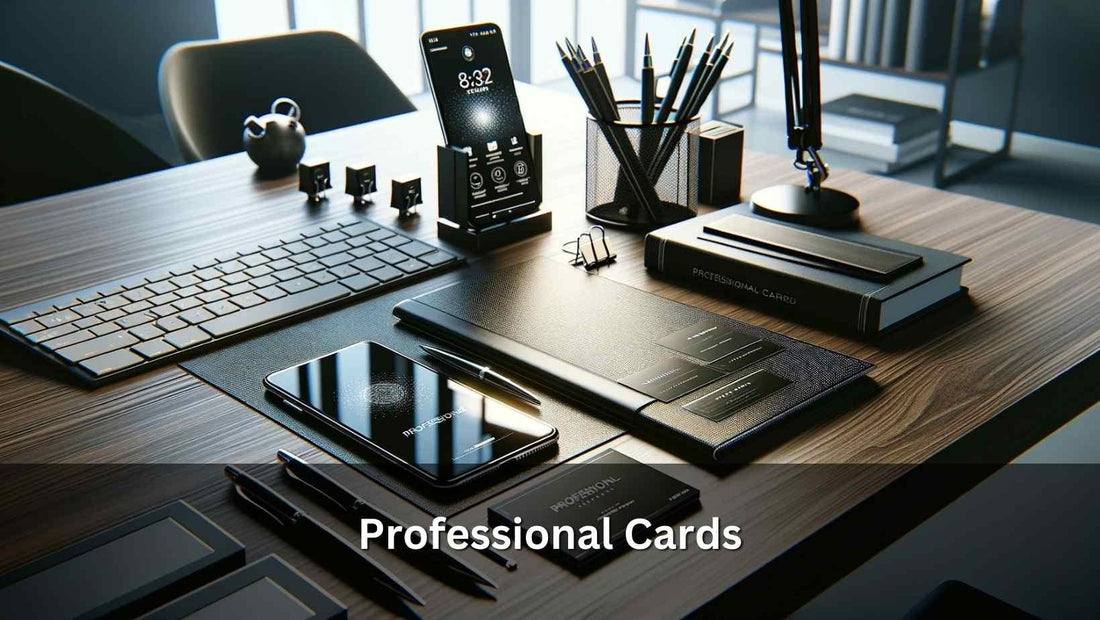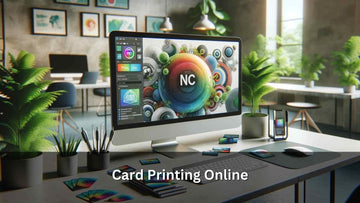The Evolution of Professional Cards: From Paper to Digital

Contents
Introduction: The Journey of Professional Cards
The evolution of professional cards is a fascinating reflection of technological advancement and societal change. For centuries, business cards have been a staple in professional networking, serving as a tangible symbol of identity and connection.
Originating in the 17th century as trade cards in Europe, these small pieces of paper bore business information and were used for advertising and directions. As business practices evolved, so did the cards, transforming into today's familiar format by the 19th century.
This transition from mere trade aids to essential professional tools reflects a broader societal shift towards organised business networking. In the 20th century, the professional card became a symbol of credibility and professionalism. Distributed in formal settings, these cards were not just informational tools but also a reflection of one's professional image and status.
As we entered the digital era, the concept of professional cards experienced another transformation, adapting to the new ways we communicate and network. The paper card, once a novelty, became a standard, paving the way for more innovative methods to exchange professional information. This marked the beginning of a new chapter in the story of professional cards, one that intertwined traditional practices with burgeoning digital technologies.
The Traditional Era: The Charm of Paper Cards
The allure of traditional paper-based business cards lies in their simplicity and tactile nature. For decades, these cards served as a personal touchpoint in a professional's toolkit. The physical exchange of a card created a memorable interaction, often the first step in building a professional relationship.
The design of paper cards, from the choice of font to the quality of the paper, offered a glimpse into a person's or company’s style and ethos. These cards were more than just carriers of contact information; they were miniature canvases showcasing creativity and professionalism.
The custom of exchanging cards, especially in cultures where such rituals hold significant importance, added a layer of personal engagement to professional encounters.
However, as the business world expanded and digitisation took hold, the limitations of paper cards became apparent. Their static nature meant no scope for updating information without reprinting, leading to wastage and inconvenience. They also contributed to clutter and were often misplaced or discarded, undermining their purpose.
These limitations set the stage for a new era, where convenience and sustainability would take precedence, leading to the rise of electronic and digital alternatives such as digital business cards.

The Digital Revolution: Emergence of Electronic Cards
The dawn of the digital age brought a significant transformation in the way professional information was exchanged. The emergence of electronic cards marked a shift from the traditional paper format to a more dynamic and sustainable approach. This revolution was fueled by the rapidly evolving digital landscape and the growing need for eco-friendly solutions.
Electronic cards, or e-cards, offered an innovative alternative, harnessing the power of the internet and digital devices. They provided a flexible solution to the rigidity of paper cards, allowing professionals to update their information in real-time without the need for reprinting. This adaptability made e-cards a cost-effective and environmentally friendly option.
The introduction of electronic cards also changed the dynamics of information exchange. The process became faster and more efficient, with the ability to share cards via email or other digital platforms instantly. This convenience facilitated broader networking opportunities, transcending geographical boundaries and time zones.
However, the journey didn’t stop with electronic cards. As technology continued to advance, new innovations emerged, further enhancing the functionality and appeal of professional cards. This led to the integration of QR codes and NFC technology, setting the stage for a new era of interconnectedness and interactivity in professional networking.

Integrating Technology: QR Codes and NFC in Cards
The integration of QR codes and NFC (Near Field Communication) technology marked a significant leap in the functionality of professional cards. These technologies bridged the gap between traditional and digital methods, offering a seamless and interactive way to share and access information.
QR codes, with their simple scan-and-access mechanism, provided an easy way to direct professionals to online profiles, portfolios, or digital business platforms. By scanning the code with a smartphone, individuals could instantly view updated information, multimedia content, or even initiate contact through social media. This added a dynamic layer to the static nature of traditional business cards, enhancing engagement and accessibility.
NFC technology took this a step further by enabling contactless information exchange. Embedded in cards, NFC chips allow for the wireless transfer of data when in close proximity to an NFC-enabled device, typically a smartphone. This technology facilitated a more intuitive and efficient exchange of professional information. The mere tap of a card to a phone could transfer contact details, redirect to websites, or initiate downloads.
These technological advancements not only improved the ease and efficiency of networking but also opened doors to creative possibilities. The combination of QR codes and NFC technology in professional cards heralded a new era of connectivity and interaction, significantly enhancing the user experience in professional networking.

Design and Personalisation in the Digital Age
The digital age has revolutionised the design and personalisation of professional cards, offering boundless creative possibilities that transcend traditional limitations. Digital cards are no longer just a medium for conveying contact information; they have evolved into a platform for personal branding and creative expression. The flexibility of digital formats allows professionals to customize every aspect of their cards, from layout and design to the type of content featured.
Interactive elements like videos, links to digital portfolios, or animated backgrounds can now be incorporated, making each card a unique reflection of the individual or brand. These enhancements not only captivate the recipient's attention but also provide a richer understanding of the professional's identity and expertise. The ability to personalise extends to real-time updates, ensuring that the information remains current and relevant, a significant advantage over static paper cards.
This era of customisation and dynamic content has transformed professional cards into more than just networking tools; they are now an extension of one's professional persona, adaptable to various contexts and audiences. The digital format empowers professionals to craft a distinct and memorable identity in the business world, leveraging the power of design and personalisation to stand out in a crowded market.
Environmental and Practical Benefits of Going Digital
The shift towards digital professional cards presents significant environmental and practical benefits. In an era where sustainability is paramount, digital cards offer an eco-friendly alternative to traditional paper cards. By eliminating the need for paper and ink, digital cards reduce waste and the carbon footprint associated with the production and disposal of traditional cards.
From a practical standpoint, digital cards offer unparalleled convenience and efficiency. They can be shared effortlessly with a broader audience through various digital platforms, including email, social media, or even text messages. This ease of distribution ensures that professionals can network effectively without the physical limitations of carrying and exchanging paper cards.
Digital cards also address the issue of obsolescence and redundancy that plagues traditional cards. With the ability to update information in real-time, professionals can ensure their contacts always have access to the most current and accurate information. This adaptability is particularly crucial in today's fast-paced business environment, where contact details, job titles, and affiliations can frequently change.
In summary, digital professional cards not only align with the growing emphasis on environmental responsibility but also cater to the practical needs of modern professionals, offering a sustainable, convenient, and up-to-date solution for professional networking.
The Future Trends: AI, AR, and Beyond in Professional Cards
The future of professional cards is poised to be shaped by advancements in Artificial Intelligence (AI) and Augmented Reality (AR). AI could personalise networking experiences by analysing data to suggest optimal contacts, while AR has the potential to bring an immersive dimension to digital cards.
Imagine pointing your phone at a card and watching as a 3D model of a project or a holographic portfolio appears. These technologies will not only make networking more interactive but also more efficient, as AI algorithms could recommend connections based on professional goals and interests. The convergence of AI and AR in professional cards promises a future where networking is not only more dynamic but also more intuitive and tailored to individual needs.
Conclusion: The Continuing Evolution of Professional Networking Tools
The journey of professional cards from paper to digital signifies the ongoing evolution of professional networking tools. As we embrace digital solutions, these cards have transformed from mere contact information carriers to dynamic platforms for personal branding and networking.
The integration of technologies like NFC, QR codes, AI, and AR points towards a future where professional interactions are not only more efficient but also more engaging and tailored to individual preferences.
As we continue to innovate and integrate new technologies, professional cards will undoubtedly play a pivotal role in shaping the landscape of professional networking, adapting to the ever-changing demands of the business world.
We at NFC Tagify provide all sort of NFC Solutions or you may contact us: Tel. 01600800080, Email: info@nfctagify.com









